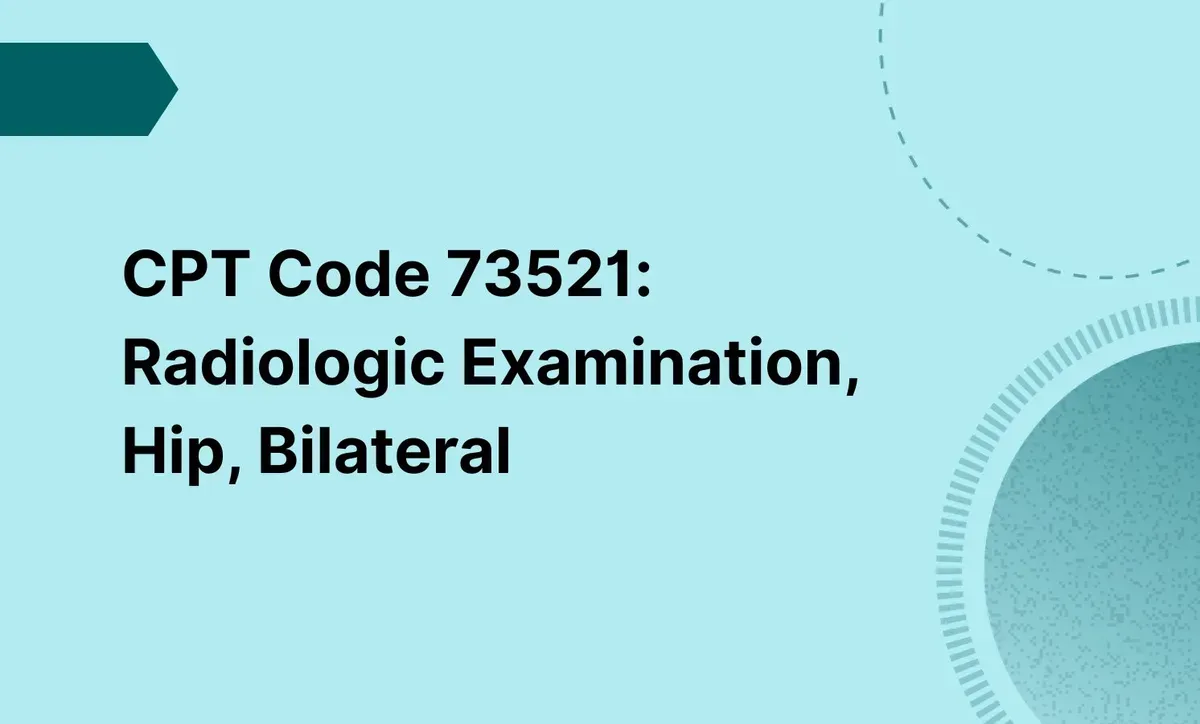CPT code 73521 represents a radiologic examination of the bilateral hips, requiring X-ray images with a minimum of 2 views to assess both hip joints.

CPT Code 73521: Radiologic Examination, Hip, Bilateral
Learn about CPT Code 73521 for bilateral hip X-rays with two views, including its purpose, documentation, and billing essentials.
Use Code
Frequently asked questions
No, Modifier -50 is not required for CPT 73521 because the bilateral nature of the procedure is already included in the code definition.
Standard imaging procedures for the 73521 CPT code usually include an anterior-posterior (AP) view and a lateral or frog-leg view to fully visualize the hips and pelvis.
EHR and practice management software
Get started for free
*No credit card required
Free
$0/usd
Unlimited clients
Telehealth
1GB of storage
Client portal text
Automated billing and online payments






